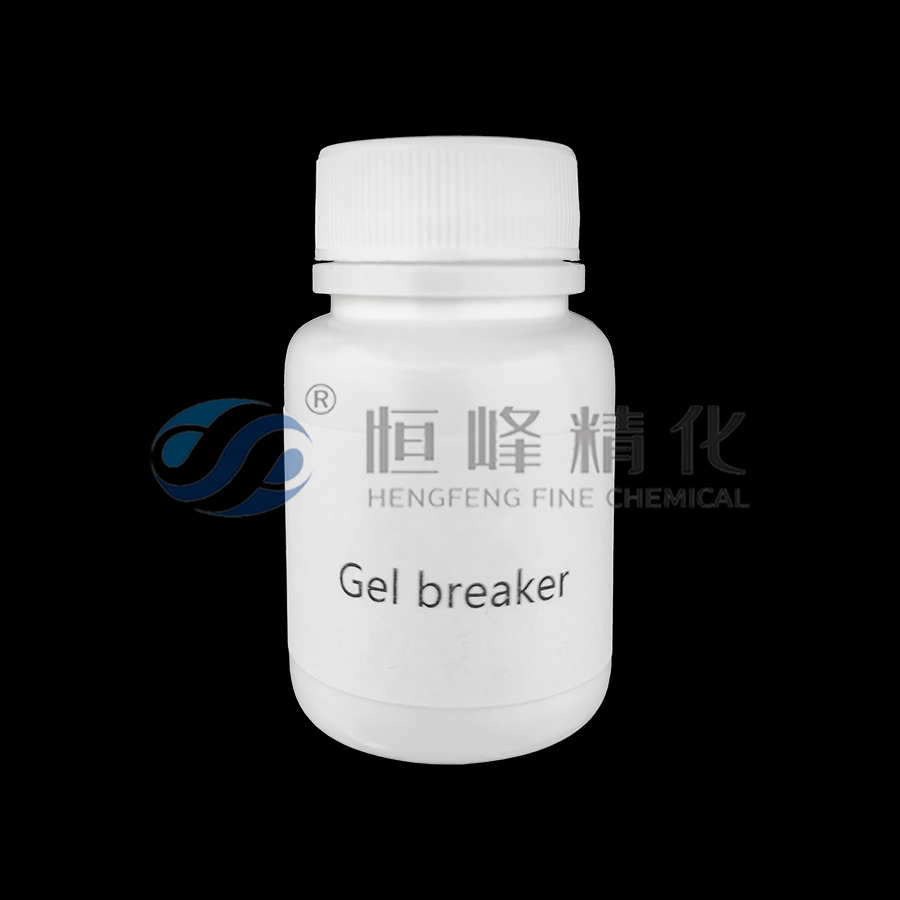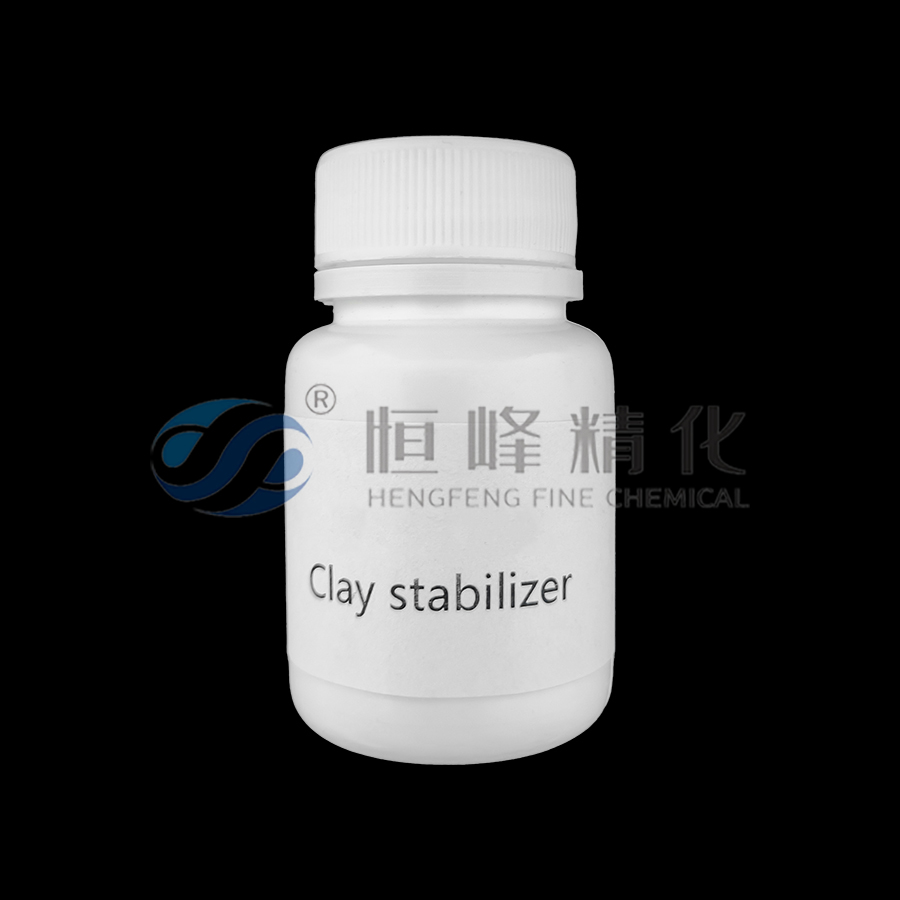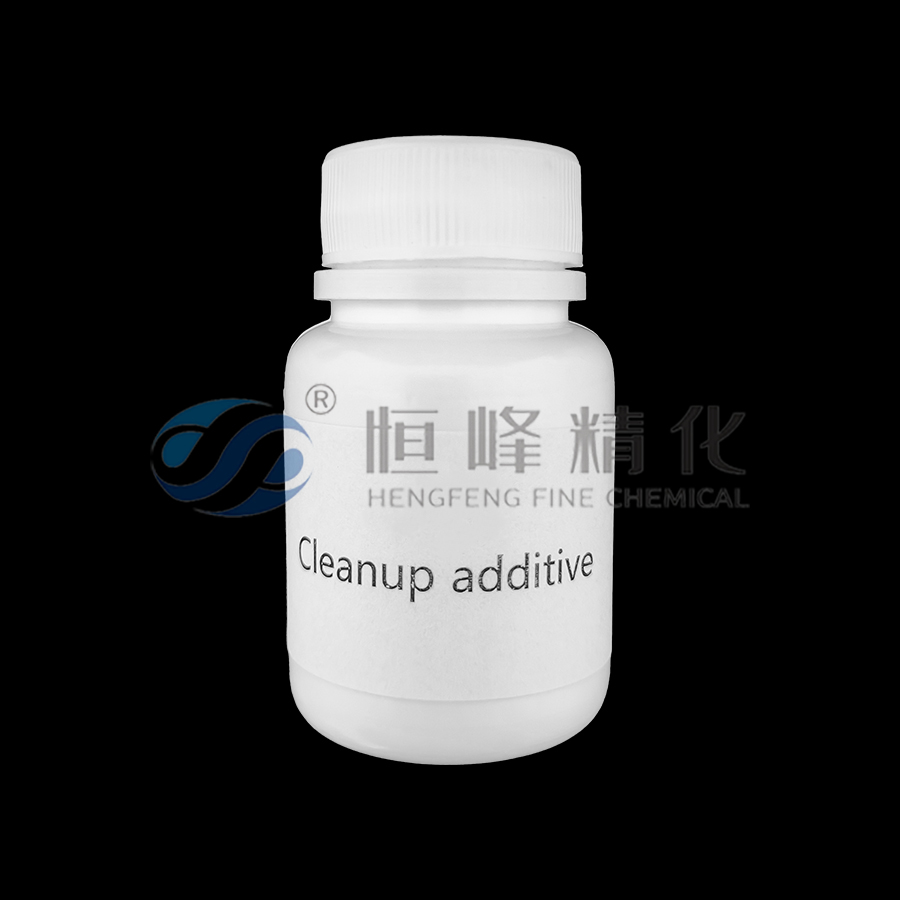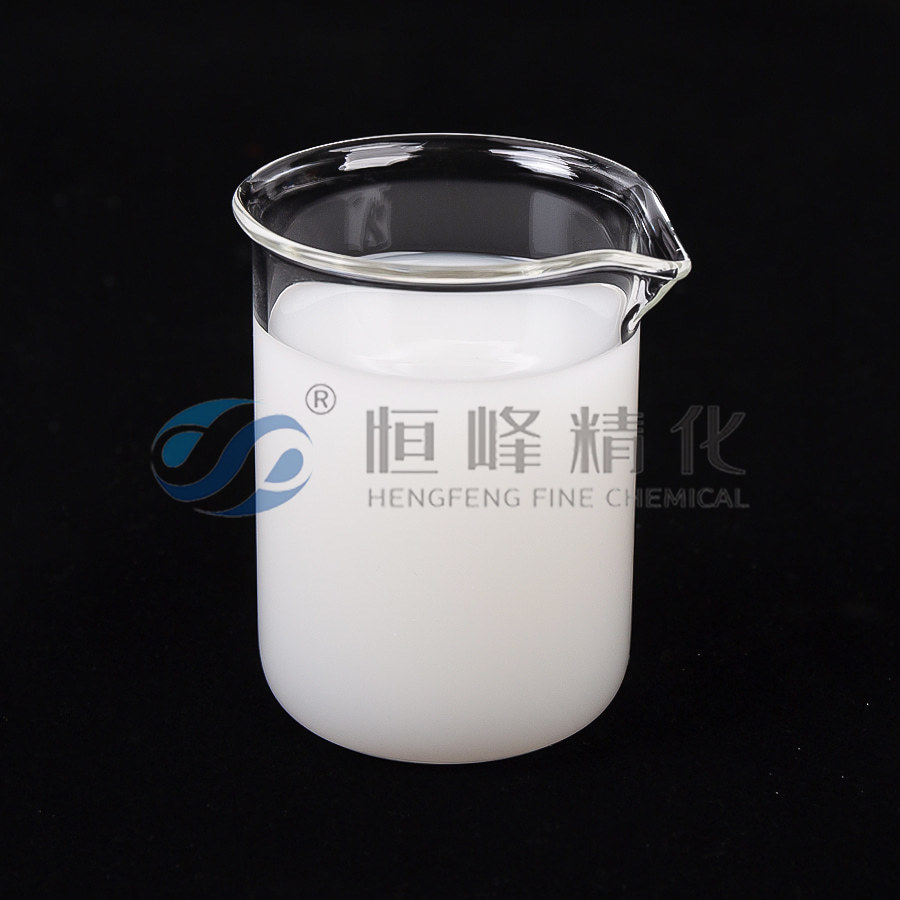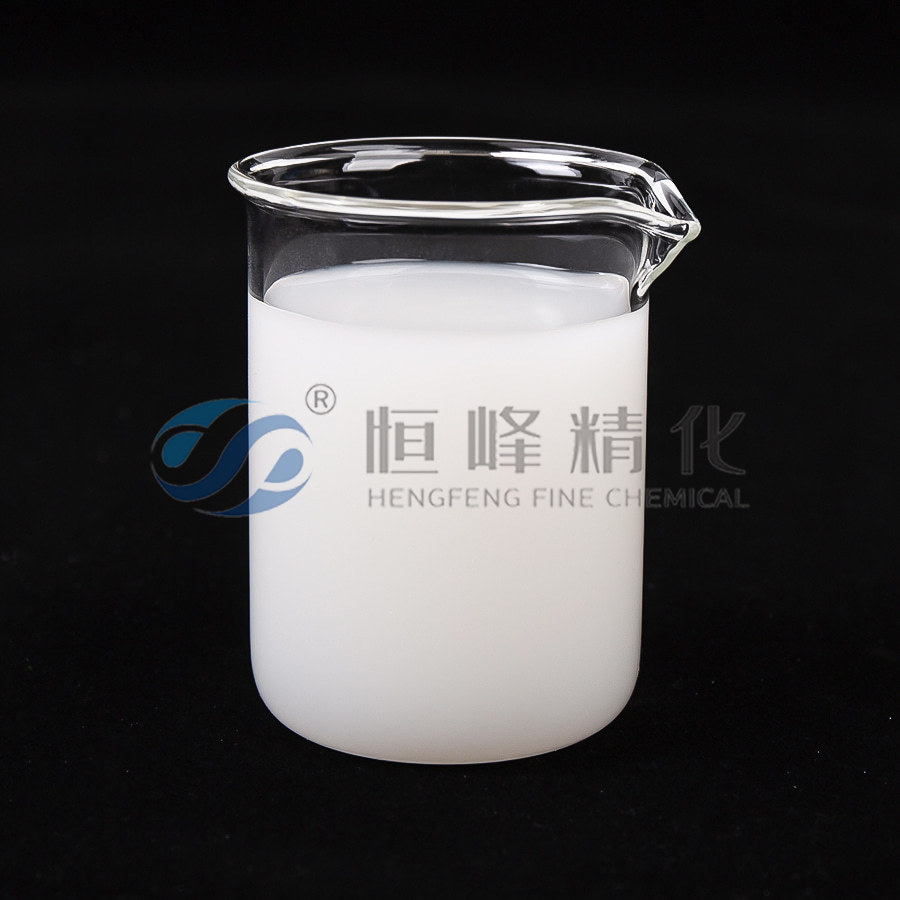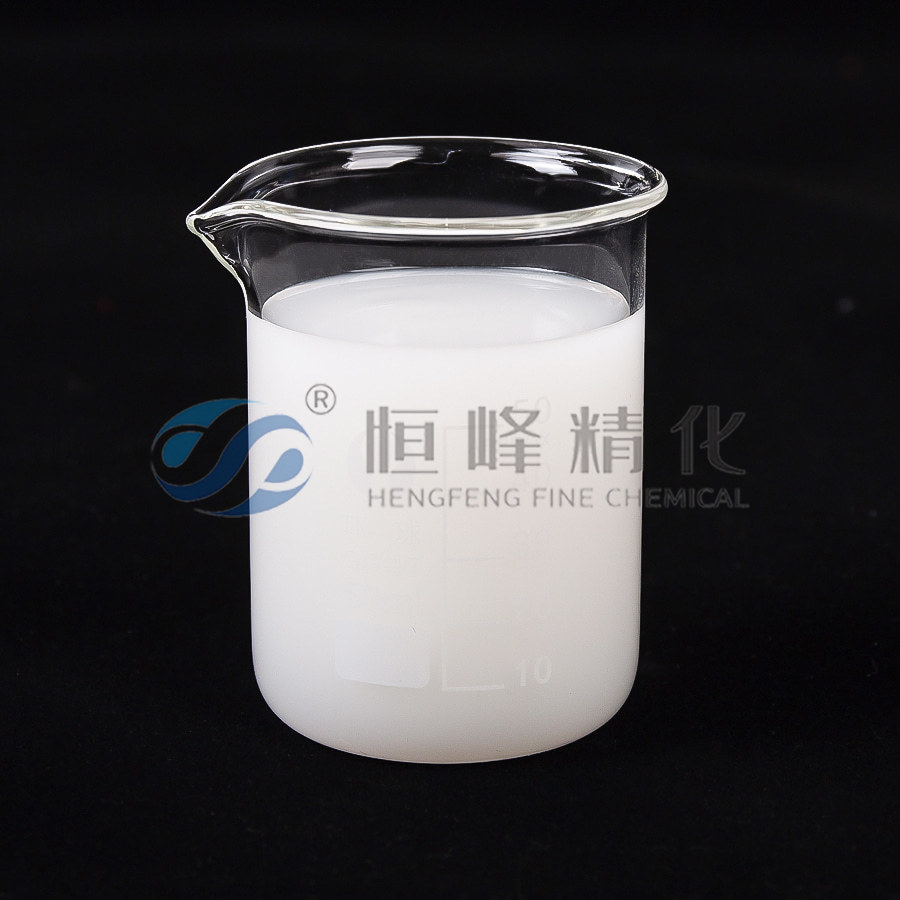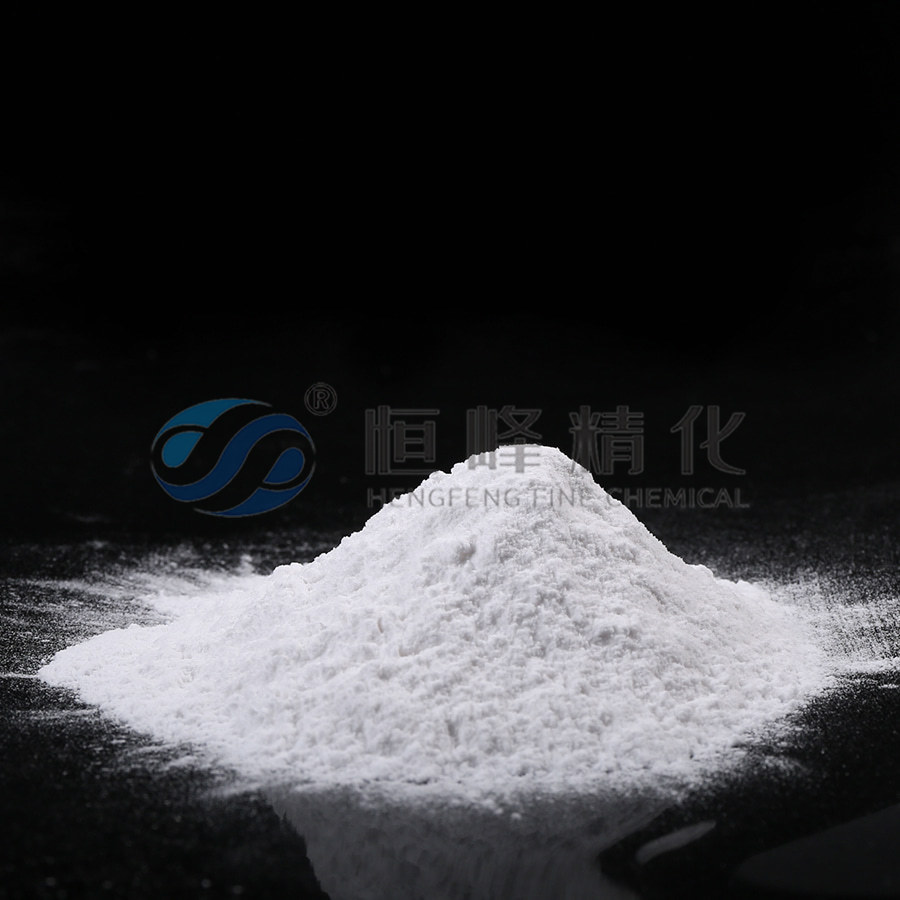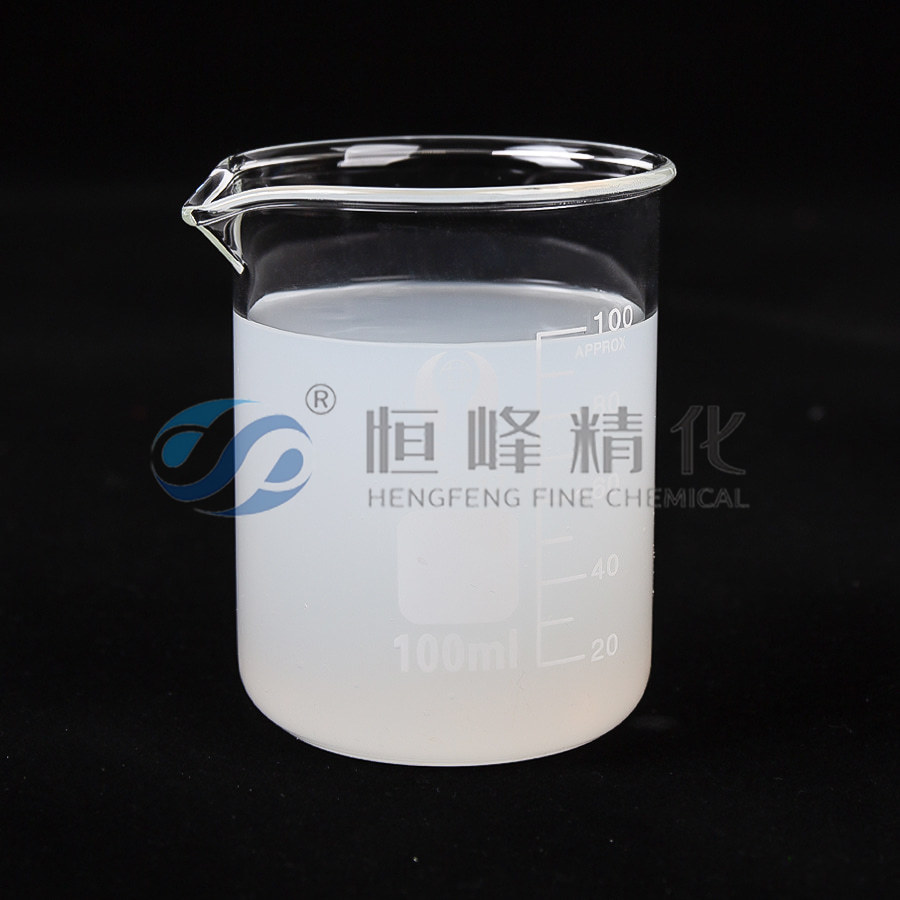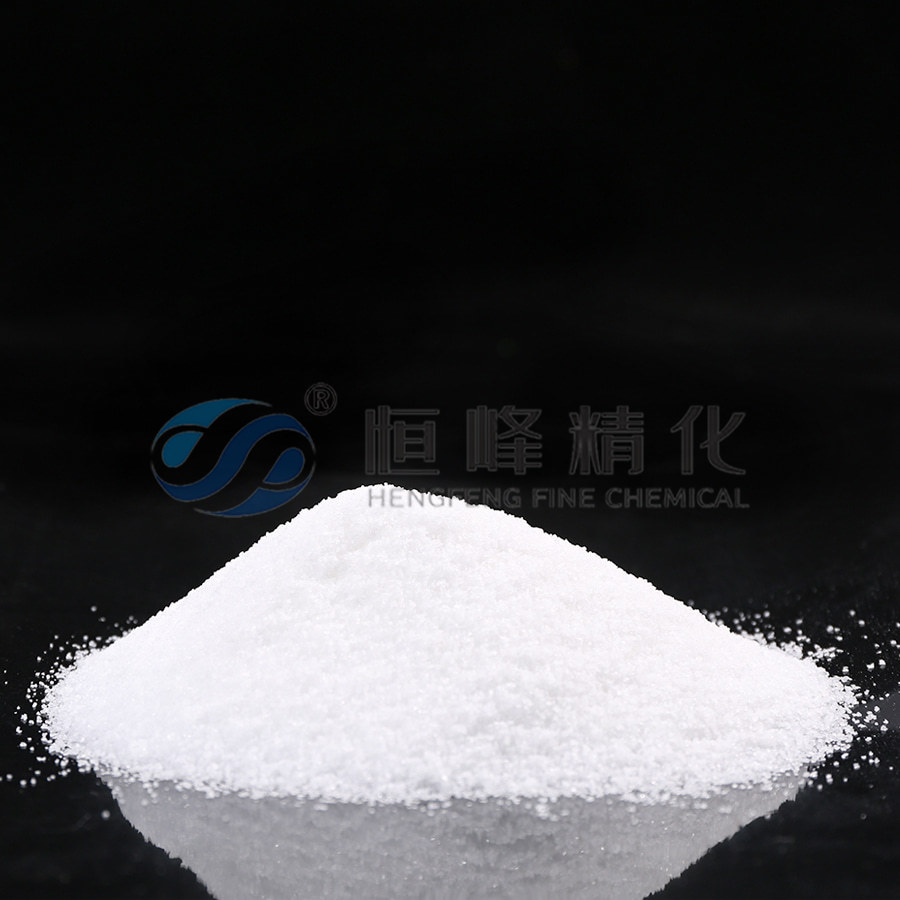Cationic Polyacrylamide Emulsion: Applications, Benefits and more
What Is Cationic Polyacrylamide Emulsion?
Cationic polyacrylamide emulsion is a widely utilized polymer in various industrial applications, playing a pivotal role in processes such as water treatment, paper manufacturing, oil recovery, and mining. This substance is a modified version of polyacrylamide, characterized by the addition of cationic groups, which enhance its ability to interact with negatively charged particles. The emulsion form of this polymer is especially beneficial because it simplifies its application in different industrial settings, making it more efficient and convenient to use. In this article, we will explore the key features, properties, and broad range of applications of this versatile material.
Introduction to Cationic Polyacrylamide Emulsion
Polyacrylamide, a high-molecular-weight polymer, can be modified to exhibit different ionic properties. The addition of cationic (positively charged) groups to the polyacrylamide structure creates a more specialized product that can interact effectively with anionic (negatively charged) particles in various industrial processes. The resulting emulsion allows for easy dispersion in water-based systems, making it ideal for numerous applications where particle flocculation, coagulation, and enhanced stability are essential.
The process of manufacturing involves emulsifying polyacrylamide in water, resulting in an easy-to-apply liquid form. The emulsion's primary strength lies in its ability to flocculate, coagulate, and enhance adhesion properties, which proves valuable in numerous industries.
Chemical Structure and Properties
The key feature of this polymer lies in its cationic groups, typically amine or ammonium-based, which impart positive charges to the polymer. This enables it to form strong bonds with negatively charged particles such as clays, organic matter, and suspended solids. The cationic nature of the polymer makes it more effective in binding and aggregating particles, especially in water treatment and other filtration applications.
Some of the primary properties include:
High Solubility: Easily dissolves in water, making it suitable for various aqueous-based processes.
Viscosity Control: Regulates the viscosity of liquids, which helps in processes like thickening and improving the effectiveness of flocculation.
Charge Density: The positive charge enhances interaction with negatively charged substances, improving separation and filtration efficiency.
Applications in Various Industries
The versatility of this polymer allows it to be employed in a wide array of industrial applications, where its flocculation and adhesion properties are critical. Let’s explore the primary industries that benefit from its use:
1. Water Treatment and Wastewater Management
The ability of cationic polyacrylamide emulsions to agglomerate suspended solids makes them indispensable in water and wastewater treatment processes. In municipal, industrial, and agricultural water systems, this polymer is used to clarify water and facilitate the separation of contaminants from wastewater.
Flocculation and Coagulation: The polymer helps in aggregating fine particles into larger clusters (flocs) that can easily be removed, improving water quality.
Sludge Dewatering: It aids in separating water from sludge, which enhances the efficiency of waste disposal and reduces operational costs in wastewater treatment plants.
2. Paper Manufacturing
In the paper industry, this polymer is used to enhance retention, drainage, and surface treatment during paper production. It helps retain fine particles in the paper pulp and improves the quality and strength of the paper.
Retention and Drainage: The polymer binds fine fillers and fibers in the pulp, improving the overall quality of paper.
Surface Sizing: It is used in the coating of paper to enhance its strength and resistance to wear.
3. Oil and Gas Industry
In the oil and gas sector, the emulsion is used to improve the efficiency of oil recovery processes. It helps reduce friction during the injection of water and enhances the displacement of oil from underground reservoirs.
Enhanced Oil Recovery (EOR): The polymer improves water injection processes by reducing friction and viscosity, enabling more oil to be extracted from reservoirs.
Drilling Fluid Additives: It is also used as an additive in drilling fluids to improve the performance of drilling operations, preventing clogging and improving the overall efficiency of the drilling process.
4. Mining and Mineral Processing
Mining operations benefit from this polymer in several ways, particularly in the flotation and separation processes used to extract valuable minerals from ore.
Flotation and Separation: The polymer assists in separating valuable minerals from waste materials during the flotation process.
Tailings Management: It helps with the separation of solid waste (tailings) from the liquid, making it easier to manage and reduce environmental impacts.
5. Textile and Dyeing Industry
Cationic polyacrylamide emulsions are used in textile processing to improve fabric quality and in dyeing processes to ensure even color distribution.
Textile Finishing: The polymer helps improve fabric smoothness, softness, and water resistance.
Dyeing Efficiency: It enhances the absorption of dyes, ensuring uniform color application on fabrics.
6. Agricultural Applications
The polymer also plays a role in improving soil quality and enhancing water retention in agricultural settings.
Soil Stabilization: It binds soil particles, reducing erosion and improving soil structure.
Water Retention: It helps increase the water retention capacity of soil, reducing the need for frequent irrigation and enhancing water-use efficiency.
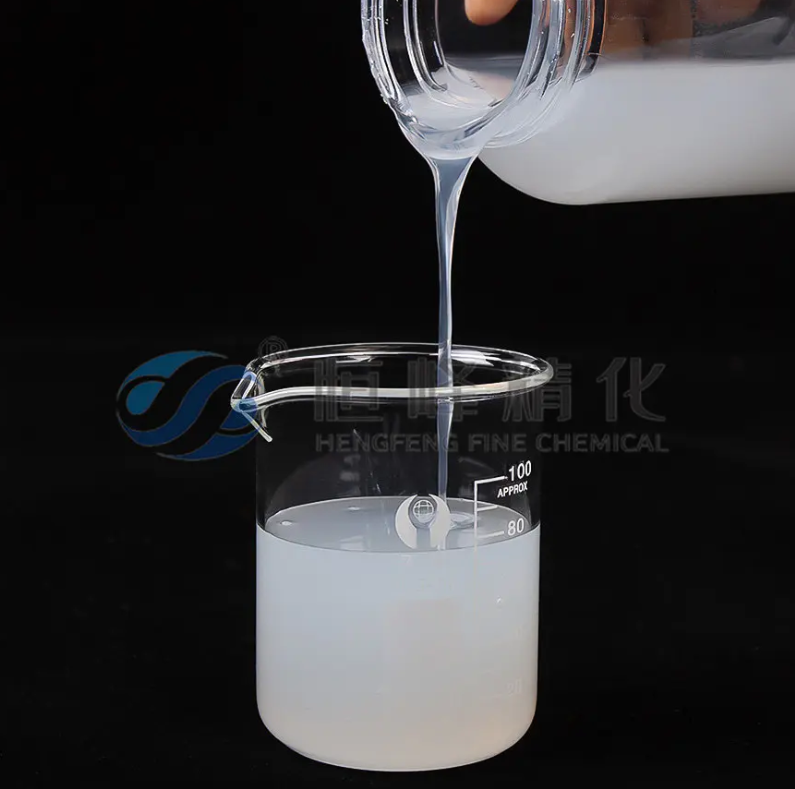
Chemical Composition and Structure of Cationic Polyacrylamide
The chemical composition of cationic polyacrylamide emulsion is based on the polyacrylamide polymer, which consists of acrylamide monomers (C3H5NO) linked together through a polymerization process. In cationic polyacrylamide, these acrylamide monomers are modified by introducing positively charged cationic groups into the polymer backbone. These cationic groups can vary in structure but often include amine or ammonium groups that confer a positive charge to the polymer.
The emulsion form of this polymer consists of finely dispersed droplets of cationic polyacrylamide in water. This form allows for easier handling and application in water-based systems, especially in industrial processes where precision and efficiency are crucial.
Key Points of the Structure:
Polymer Backbone: The main chain consists of acrylamide monomers that are polymerized into long molecular chains.
Cationic Groups: These positive charges are attached to the polymer backbone, which enhances the polymer’s interaction with negatively charged particles.
Water Dispersion: The polymer is dispersed in water to create the emulsion, allowing it to be easily applied in various processes.
The Role of Cationic Groups in the Polymerization Process
The cationic groups incorporated into the polyacrylamide molecule play a critical role in its functionality. These groups enable the polymer to interact with particles and materials that carry a negative charge. In many industrial processes, such as water treatment or paper manufacturing, the ability of a polymer to attract and bind with negatively charged materials is key to achieving effective separation, clarification, or retention.
Functions of Cationic Groups:
Enhanced Particle Interaction: The positive charge of the cationic groups allows the polymer to interact with and aggregate negatively charged particles, facilitating processes such as flocculation and coagulation.
Increased Adhesion: Cationic groups enhance the polymer's ability to bind to surfaces, which is especially beneficial in applications like oil recovery and paper production.
Improved Stability: The cationic nature increases the stability of the polymer in aqueous solutions, allowing it to perform consistently in varying conditions.
During the polymerization process, acrylamide monomers are reacted with cationic agents, creating a copolymer that incorporates both acrylamide and cationic functional groups. This modification significantly boosts the polymer's performance in many industrial applications, where the binding of particles and the reduction of suspended solids are essential.
Difference Between Cationic, Anionic, and Nonionic Polyacrylamide
Polyacrylamide polymers can be broadly classified into three categories based on their ionic charge: cationic, anionic, and nonionic. Each type of polyacrylamide exhibits unique properties that make them suitable for different industrial processes. Understanding the differences between these three forms of polyacrylamide is essential for selecting the right polymer for specific applications.
1. Cationic Polyacrylamide
Ionic Charge: Cationic polyacrylamide contains positively charged groups, usually amine or ammonium, incorporated into the polymer structure.
Applications: It is widely used in water treatment, paper manufacturing, and enhanced oil recovery. The positive charge enhances its ability to interact with negatively charged particles, making it ideal for flocculation and coagulation processes.
Properties: The cationic charge improves the polymer’s adhesion to surfaces and its efficiency in binding negatively charged contaminants, which makes it highly effective in wastewater treatment and other purification processes.
2. Anionic Polyacrylamide
Ionic Charge: Anionic polyacrylamide, on the other hand, contains negatively charged groups (such as carboxylate) that are incorporated into the polymer structure.
Applications: This form of polyacrylamide is primarily used for soil erosion control, water treatment, and mining. It is effective in promoting the dispersion of particles and stabilizing suspensions in processes such as flotation.
Properties: Anionic polyacrylamide is highly effective in enhancing the separation of particles by promoting the dispersion of negatively charged contaminants. It works well in applications where the removal of organic matter or sludge is necessary.
3. Nonionic Polyacrylamide
Ionic Charge: Nonionic polyacrylamide lacks a distinct ionic charge, meaning it has no inherent positive or negative charge in its structure.
Applications: Nonionic polyacrylamide is commonly used in applications where flocculation is required but where ionic interaction is not critical. It is often used in textile processing, mining, and as a thickening agent in various formulations.
Properties: This polymer has a neutral charge, making it suitable for processes where neither the positive nor negative charge interactions are needed. It is primarily used for thickening or enhancing the viscosity of aqueous systems.
Key Differences at a Glance:
| Property | Cationic Polyacrylamide | Anionic Polyacrylamide | Nonionic Polyacrylamide |
|---|---|---|---|
| Ionic Charge | Positive (Cationic) | Negative (Anionic) | Neutral (Nonionic) |
| Main Applications | Water treatment, paper production, oil recovery | Soil stabilization, wastewater treatment, mining | Textile processing, mining, thickening agent |
| Particle Interaction | Binds well with negatively charged particles | Dispersion of negatively charged materials | No ionic interaction, neutral in systems |
| Properties | High adhesion, effective flocculation and coagulation | Effective dispersion, stabilizes suspensions | Thickens and enhances viscosity without charge interaction |
Manufacturing Process of Cationic Polyacrylamide Emulsion
The manufacturing process of cationic polyacrylamide emulsion begins with the polymerization of acrylamide monomers, followed by the incorporation of cationic functional groups and the emulsification of the resulting polymer into a water-based system. This process is carefully controlled to ensure the desired properties of the emulsion, such as charge density, molecular weight, and viscosity.
Polymerization of Acrylamide: The first step in the manufacturing process is the polymerization of acrylamide. Acrylamide monomers are polymerized in the presence of an initiator, typically a chemical compound that starts the polymerization reaction. In the case of cationic polyacrylamide emulsion, cationic agents are introduced into the polymerization process, which modifies the acrylamide molecules to carry positive charges (cationic groups) on their structure.
Incorporation of Cationic Groups: During the polymerization process, specific cationic monomers or cationic agents, such as quaternary ammonium compounds, are introduced to modify the polyacrylamide polymer. These cationic agents are essential for the polymer’s performance in processes like flocculation, where positive charges help interact with negatively charged particles.
Emulsification: Once the polymerization process is complete, the resulting polymer is emulsified in water to create an emulsion. The polymer is dispersed in a continuous water phase, and stabilizing agents are added to prevent the polymer from aggregating or separating from the water phase. The result is a stable emulsion that can be directly applied in various industrial applications.
Stabilization: After emulsification, stabilizers and preservatives may be added to increase the shelf life and prevent degradation of the emulsion over time. These stabilizers ensure the long-term performance and consistency of the cationic polyacrylamide emulsion.
The final product is a high-performance emulsion, ready for use in various applications like water treatment, paper production, and oil recovery.
Key Ingredients and Their Functions
The preparation of cationic polyacrylamide emulsion requires the use of several key ingredients, each playing a specific role in the final product’s performance and stability. These ingredients are carefully selected to ensure the polymer’s optimal effectiveness in its target applications.
Acrylamide Monomers: Acrylamide is the base compound used to create polyacrylamide. It undergoes polymerization to form the polymer backbone, which provides the structural integrity of the cationic polyacrylamide emulsion. The acrylamide monomers are essential for the polymer’s ability to interact with other materials, particularly in water treatment processes.
Cationic Agents (Cationic Monomers): Cationic monomers, such as quaternary ammonium compounds or amino acids, are the key ingredients that introduce positive charges into the polyacrylamide structure. These cationic agents are responsible for enhancing the polymer’s ability to interact with negatively charged particles, which is critical in applications like flocculation and coagulation.
Emulsifying Agents: These agents, often surfactants or stabilizers, are used to disperse the polyacrylamide polymer into the water phase and create a stable emulsion. Emulsifiers prevent the polymer from aggregating or separating from the water phase, ensuring that the emulsion remains uniform and easy to apply.
Initiators: Chemical initiators are used to start the polymerization reaction. They decompose to form free radicals that begin the polymerization process, linking acrylamide monomers together to form long-chain polyacrylamide molecules.
Stabilizers/Preservatives: To ensure that the cationic polyacrylamide emulsion remains stable over time, stabilizers and preservatives are often added. These compounds prevent the polymer from breaking down or degrading during storage, ensuring the emulsion maintains its effectiveness and performance throughout its shelf life.
Water: Water is the continuous phase in the emulsion and serves as the medium for dispersing the polyacrylamide polymer. It is crucial for creating the emulsion’s desired consistency and enabling the polymer to be easily applied in industrial applications.
Emulsion Polymerization Process
The emulsion polymerization process is the core method for creating cationic polyacrylamide emulsion. It involves the formation of a stable, uniform mixture of polyacrylamide polymer particles in a water-based phase. The key steps in the emulsion polymerization process include:
Initiation: The polymerization process begins when the initiators are added to the system. These initiators break down to form free radicals that start the polymerization reaction by attacking acrylamide monomers, causing them to link together and form long-chain polymer molecules.
Propagation: Once the polymerization process begins, the acrylamide monomers continue to add onto the growing polymer chain. Cationic agents are introduced during this phase to modify the polymer structure, incorporating positively charged groups that will allow the polymer to interact with negatively charged materials in later applications.
Emulsification: As the polymer chains grow, the reaction mixture becomes emulsified in water, turning the liquid into an emulsion. Emulsifiers and stabilizing agents are added during this stage to ensure that the polymer particles are evenly dispersed in the water phase and that the emulsion remains stable.
Termination: The polymerization process is terminated once the desired polymer chain length is achieved. This is typically done by introducing a chemical agent that deactivates the free radicals, halting the polymerization reaction. At this stage, the polymer is fully formed and dispersed in the water phase, creating the final cationic polyacrylamide emulsion.
Stabilization and Final Processing: After polymerization is complete, the emulsion is further processed by adding stabilizers or preservatives to enhance its shelf life and prevent any separation of the polymer from the water phase. The final product is then packaged and ready for use in a wide range of industrial applications.
Properties of Cationic Polyacrylamide Emulsion
Cationic polyacrylamide emulsion is a highly versatile polymer that is widely used in various industrial applications due to its unique properties. These properties play a crucial role in determining the performance and effectiveness of the emulsion in processes like water treatment, paper manufacturing, oil recovery, and mining. Understanding the key properties of cationic polyacrylamide emulsion is essential for selecting the right polymer for specific applications.
Solubility and Viscosity
Solubility is one of the most important properties of cationic polyacrylamide emulsion, as it directly impacts the polymer’s performance in water-based systems. Polyacrylamide, in general, is highly soluble in water, and the cationic version maintains this characteristic. The emulsion form enhances the polymer’s dispersion in aqueous solutions, making it easy to apply in industrial processes.
Solubility: Cationic polyacrylamide emulsion dissolves easily in water, forming a stable, uniform solution. This solubility ensures that the polymer can be effectively used in various applications such as water treatment, where uniform dispersion is necessary for flocculation and coagulation processes.
Viscosity: The viscosity of cationic polyacrylamide emulsion is an essential characteristic that affects its application in many industrial operations. The viscosity of the emulsion can be adjusted depending on the molecular weight and the concentration of the polymer. In many applications, the viscosity plays a key role in determining the efficiency of flocculation, sedimentation, and dewatering processes. A higher viscosity may be desired in certain applications, such as thickening in the mining industry, while lower viscosity may be preferred for other processes like water treatment.
The balance of solubility and viscosity ensures that the emulsion performs effectively in diverse industrial settings, providing the necessary consistency and ease of application in water-based systems.
Charge Density and Molecular Weight
Charge Density and Molecular Weight are two crucial properties that govern the behavior of cationic polyacrylamide emulsion in various applications, particularly in processes that involve interactions with particles or other materials.
Charge Density: The cationic charge density of the polymer refers to the number of positively charged groups attached to the polymer backbone. These positively charged groups enhance the polymer's ability to interact with negatively charged particles, such as clays, organic matter, or suspended solids in water treatment applications. A higher charge density improves the polymer's flocculation and coagulation ability, making it more effective in aggregating particles for separation. The charge density can be adjusted based on the specific needs of an application, allowing the polymer to be tailored to achieve optimal results in different industrial processes.
Molecular Weight: The molecular weight of cationic polyacrylamide emulsion is another important property that influences its performance. Higher molecular weight polymers tend to have greater viscosity, which can improve the efficiency of flocculation and increase the strength of the resulting flocs. The molecular weight also affects the polymer's ability to bridge particles, which is essential in processes such as wastewater treatment and oil recovery. In contrast, lower molecular weight versions may be used in applications requiring less viscosity or where quicker interaction with particles is needed.
The combination of charge density and molecular weight determines how the polymer will perform in various applications, impacting the efficiency and effectiveness of processes such as flocculation, filtration, and thickening.
Stability and Shelf Life
The stability and shelf life of cationic polyacrylamide emulsion are crucial for ensuring the product’s long-term effectiveness and reliability. The stability of the emulsion determines how well it maintains its properties during storage and over time, which is vital for industries that require consistent performance across large-scale operations.
Stability: Cationic polyacrylamide emulsions are generally stable due to the nature of the emulsification process, which ensures the polymer is dispersed in the water phase without aggregating. The addition of stabilizing agents during the manufacturing process further enhances the emulsion’s stability. However, factors such as temperature, pH, and the presence of certain chemicals can affect the stability of the emulsion. For instance, exposure to high temperatures may cause the polymer to degrade, while exposure to extreme pH conditions could reduce its effectiveness.
Shelf Life: The shelf life of cationic polyacrylamide emulsion is typically extended by the use of preservatives and stabilizers. These additives help prevent microbial growth, chemical degradation, and phase separation, ensuring that the product remains functional over extended periods. Proper storage conditions—such as keeping the product at a stable temperature and avoiding contamination—are essential for maintaining the shelf life and effectiveness of the emulsion.
Maintaining stability and extending the shelf life of cationic polyacrylamide emulsion is vital for industries that rely on consistent polymer performance over time, ensuring that the product remains effective when needed for large-scale processes.
Environmental and Chemical Resistance
Environmental and chemical resistance are important properties of cationic polyacrylamide emulsion, as they determine how well the polymer can withstand harsh conditions and maintain its functionality when exposed to various environmental factors and chemicals.
Environmental Resistance: Cationic polyacrylamide emulsions are generally resistant to environmental factors such as temperature fluctuations and humidity. However, extreme environmental conditions—such as excessive heat, cold, or prolonged exposure to UV light—can degrade the polymer. The emulsions are often formulated with stabilizers that help them retain their properties under varying environmental conditions, ensuring that they perform consistently even in challenging climates.
Chemical Resistance: The chemical resistance of cationic polyacrylamide emulsion is a critical factor in determining its suitability for use in processes where exposure to harsh chemicals is common. Cationic polyacrylamide emulsions exhibit good resistance to many acids, bases, and salts, which makes them effective in various industrial applications. However, exposure to highly concentrated chemicals, strong oxidizers, or solvents can potentially degrade the polymer. Careful selection of the emulsion type and formulation can help ensure that the polymer maintains its integrity when exposed to specific chemicals in different industrial environments.
The ability of cationic polyacrylamide emulsion to resist environmental and chemical stress is key to its reliability in industries such as wastewater treatment, mining, and paper production, where it is exposed to challenging conditions.
Advantages of Using Cationic Polyacrylamide Emulsion
Enhanced Efficiency in Water Treatment
One of the primary advantages of cationic polyacrylamide emulsion is its ability to significantly enhance the efficiency of water treatment processes. Water treatment is essential for maintaining water quality and ensuring the safe disposal of wastewater in various industrial sectors. The unique properties of cationic polyacrylamide emulsion, such as its excellent flocculation and coagulation abilities, enable it to play a critical role in improving the efficiency of these processes.
Flocculation and Coagulation: Cationic polyacrylamide emulsion aids in the aggregation of fine suspended solids, causing them to form larger particles, or flocs. These larger particles are much easier to remove from water, leading to improved clarity and water quality. The polymer's positive charge helps it interact with negatively charged particles, enhancing the separation and removal of contaminants.
Faster Treatment Time: The effectiveness of cationic polyacrylamide emulsion in aggregating particles speeds up the overall water treatment process. This can be particularly valuable in industries that require large-scale water purification, such as municipal water treatment facilities or industrial wastewater treatment plants.
Reduced Chemical Usage: By improving the flocculation process, the polymer reduces the need for excessive use of other chemicals in the water treatment process, further optimizing the treatment cycle and reducing overall chemical costs.
Cost-Effective Solutions in Industrial Processes
Cationic polyacrylamide emulsion provides cost-effective solutions for several industries by reducing operational expenses and enhancing process efficiency. It is widely used in applications like paper production, oil recovery, and mineral processing, where its advantages can lead to significant cost savings.
Reduced Operational Costs: By improving the efficiency of separation and dewatering processes, cationic polyacrylamide emulsion can reduce the amount of energy and resources needed for these operations. This directly leads to lower operational costs for industries that rely on these processes.
Minimized Chemical Consumption: Cationic polyacrylamide emulsion often replaces the need for other, more expensive chemicals in industrial applications. In processes such as water treatment, it can substitute for several traditional coagulants and flocculants, reducing the overall chemical consumption.
Improved Product Quality: In applications like paper manufacturing, the use of cationic polyacrylamide emulsion improves the retention of fine particles and enhances the quality of the final product. This leads to fewer production defects, reducing waste and the cost of rework.
In addition to reducing costs in operations and chemical usage, the overall improvement in product quality can lead to a higher yield of finished products, further contributing to cost efficiency.
Improved Performance in Flocculation and Coagulation
The core strength of cationic polyacrylamide emulsion lies in its performance in flocculation and coagulation—two processes vital to industries such as wastewater treatment, mining, and paper production. By enhancing these processes, cationic polyacrylamide emulsion ensures more effective and efficient separation of solids and liquids, making it indispensable in several applications.
Efficient Particle Aggregation: The cationic nature of the polymer allows it to attract and bond with negatively charged particles, leading to the formation of larger flocs. These flocs are much easier to separate from liquids, improving the overall filtration and settling process.
Higher Floc Strength: The polymer not only helps in creating flocs but also improves their strength, making them more stable and easier to handle during dewatering or filtration processes. This is particularly beneficial in wastewater treatment, where strong flocs reduce the risk of breakage during handling.
Customization for Specific Needs: The charge density and molecular weight of cationic polyacrylamide emulsion can be adjusted to suit specific flocculation and coagulation requirements. Whether the goal is to remove organic or inorganic substances from water, the polymer can be customized to meet the demands of various industrial processes.
The superior performance of cationic polyacrylamide emulsion in flocculation and coagulation ensures higher efficiency in separating solid particles from liquids, reducing processing time and improving operational results.
Environmentally Friendly and Biodegradable Options
In today's industrial landscape, there is increasing pressure to adopt more sustainable and environmentally friendly practices. Cationic polyacrylamide emulsion offers an environmentally responsible solution, as it is biodegradable and can break down into non-toxic substances over time, minimizing its impact on the environment.
Biodegradability: One of the most significant advantages of using cationic polyacrylamide emulsion is its biodegradability. Unlike some traditional chemicals used in water treatment and industrial processes, this polymer does not persist in the environment, reducing the risk of long-term contamination in water bodies and soil.
Less Toxicity: Cationic polyacrylamide emulsion is relatively non-toxic compared to other flocculants and chemicals. Its low toxicity makes it safer to use in various industrial applications, particularly in sectors where worker safety and environmental responsibility are key concerns.
Compliance with Environmental Regulations: As industries face stricter environmental regulations, the use of biodegradable and eco-friendly polymers like cationic polyacrylamide emulsion helps companies meet these standards. This allows businesses to operate in an environmentally responsible manner while ensuring that their products and processes do not harm ecosystems.
Using cationic polyacrylamide emulsion in industrial applications not only boosts operational efficiency but also helps companies adopt more sustainable practices, making it a win-win solution for both the business and the environment.
| Advantage | Description |
|---|---|
| Enhanced Efficiency in Water Treatment | - Flocculation and Coagulation: Helps aggregate fine suspended solids, improving water clarity. - Faster Treatment Time: Speeds up the overall water treatment process. - Reduced Chemical Usage: Lowers the need for excessive chemicals in the treatment process. |
| Cost-Effective Solutions in Industrial Processes | - Reduced Operational Costs: Enhances efficiency, lowering energy and resource consumption. - Minimized Chemical Consumption: Reduces the need for additional chemicals in various processes. - Improved Product Quality: Leads to better finished products and fewer defects, saving costs on rework. |
| Improved Performance in Flocculation and Coagulation | - Efficient Particle Aggregation: Helps particles interact and form larger, easy-to-remove flocs. - Higher Floc Strength: Increases the stability and strength of flocs for easier handling. - Customization for Specific Needs: Adjustable charge density and molecular weight for tailored flocculation. |
| Environmentally Friendly and Biodegradable Options | - Biodegradability: Breaks down into non-toxic substances, reducing environmental impact. - Less Toxicity: Non-toxic compared to traditional flocculants, ensuring safer usage. - Compliance with Environmental Regulations: Helps businesses meet stricter eco-regulations. |
Recent Advances and Innovations in Cationic Polyacrylamide Emulsion
Cationic polyacrylamide emulsion has long been a staple in many industrial applications, including water treatment, paper manufacturing, and enhanced oil recovery. As industries evolve and demand for more efficient, environmentally friendly solutions increases, significant advances have been made in the synthesis, production, and performance of cationic polyacrylamide emulsion.
New Developments in Synthesis and Production
The synthesis and production of cationic polyacrylamide emulsion have evolved to improve its properties and application range. Traditionally, the polymerization process involved using conventional cationic monomers and chemical initiators. However, recent innovations in this field focus on optimizing the polymerization process, incorporating new technologies, and enhancing the final product's characteristics.
Advanced Polymerization Techniques: New methods in the polymerization process have been developed to improve the control over polymer chain length, molecular weight, and the distribution of cationic groups. Techniques such as controlled radical polymerization (CRP) and reversible addition-fragmentation chain transfer (RAFT) polymerization allow for more precise control over the structure and properties of the polymer. This results in more tailored products with better performance in industrial applications.
Use of Alternative Monomers: Researchers have introduced alternative monomers into the polymerization process to create more specialized cationic polyacrylamide emulsions. These new monomers provide improved charge density, greater interaction with particles, and increased performance in specific applications, such as wastewater treatment or oil recovery.
Greener Production Methods: The development of environmentally friendly production methods is a significant step forward in the production of cationic polyacrylamide emulsion. By reducing the use of harmful solvents, minimizing energy consumption, and using renewable raw materials, manufacturers can produce cationic polyacrylamide emulsions with a reduced environmental footprint.
These developments in synthesis and production are not only improving the efficiency of cationic polyacrylamide emulsions but are also paving the way for more sustainable production practices.
Enhanced Performance and Efficiency
Recent innovations in cationic polyacrylamide emulsion have focused on enhancing its performance and efficiency in various industrial applications. The advancements have enabled this polymer to deliver even better results in processes like water treatment, oil recovery, and paper manufacturing.
Improved Flocculation and Coagulation: One of the key performance improvements is in the flocculation and coagulation process, where the cationic polyacrylamide emulsion's ability to aggregate fine particles has been significantly enhanced. The use of highly effective cationic groups has increased the speed and strength of particle aggregation, resulting in faster and more efficient water treatment. This reduction in treatment time can lead to significant cost savings and higher throughput in industrial operations.
Tailored Molecular Weight and Charge Density: New formulations of cationic polyacrylamide emulsion allow for greater flexibility in adjusting the molecular weight and charge density of the polymer. By fine-tuning these parameters, the polymer can be customized to meet the specific needs of a wide range of applications, ensuring better performance in each use case. This customization is particularly useful in applications such as paper production, where the retention of fine particles is critical to the quality of the final product.
Enhanced Stability and Durability: Recent advances have also focused on improving the stability and durability of cationic polyacrylamide emulsion, ensuring that the polymer maintains its effectiveness even in challenging environmental conditions. For example, enhanced formulations have been developed that make the polymer more resistant to degradation by UV light, temperature fluctuations, and extreme pH levels, making it more reliable for long-term use in industrial processes.
The enhanced performance and efficiency of cationic polyacrylamide emulsion make it an even more valuable asset for industries seeking to improve operational performance, reduce costs, and achieve more effective results.
Green Chemistry and Sustainable Practices
As industries become more environmentally conscious, there is a growing push toward greener chemistry and sustainable practices in the production and application of chemicals. Cationic polyacrylamide emulsion is no exception, with ongoing research and innovation focused on making the polymer more eco-friendly while maintaining or improving its performance.
Biodegradability: One of the significant trends in the development of cationic polyacrylamide emulsion is increasing its biodegradability. Traditional polyacrylamide emulsions can take a long time to break down, leading to potential environmental hazards in water treatment and other industrial processes. Recent developments focus on creating emulsions that break down more quickly and safely, reducing the environmental impact of their use.
Green Production Methods: Many of the recent advances in the synthesis of cationic polyacrylamide emulsion focus on reducing the use of toxic chemicals, solvents, and energy-intensive processes. By implementing greener production methods, such as solvent-free polymerization or using renewable raw materials, manufacturers can reduce the overall environmental footprint of the polymer. These methods contribute to a more sustainable and environmentally friendly product lifecycle.
Non-Toxic and Safer Formulations: In addition to biodegradability, innovations are focused on making cationic polyacrylamide emulsion safer to handle and less toxic for humans and the environment. This includes reducing the use of potentially harmful chemicals in the polymerization process and ensuring that the final product is less harmful to aquatic life and ecosystems when it is disposed of or used in wastewater treatment.
Sustainability in Applications: Cationic polyacrylamide emulsions are also being designed for more sustainable applications, particularly in industries like mining, oil recovery, and wastewater treatment. These innovations aim to increase the efficiency of these processes while reducing the environmental impact, such as by minimizing chemical waste, conserving water, and optimizing energy use in industrial operations.
Incorporating green chemistry principles into the production and application of cationic polyacrylamide emulsion aligns with global efforts to reduce industrial environmental impacts. The adoption of these sustainable practices ensures that industries can continue to use this polymer while minimizing their carbon footprint and contributing to a cleaner, greener future.
The recent advances and innovations in cationic polyacrylamide emulsion have significantly improved its performance, efficiency, and environmental sustainability. With new developments in synthesis and production methods, enhanced performance in flocculation and coagulation, and a stronger focus on green chemistry, cationic polyacrylamide emulsion is evolving to meet the demands of modern industries. As these innovations continue to emerge, cationic polyacrylamide emulsion will remain a critical material for achieving efficient, cost-effective, and environmentally responsible solutions in water treatment, oil recovery, paper manufacturing, and beyond.


 English
English Español
Español عربى
عربى Русский
Русский Tiếng Việt
Tiếng Việt




